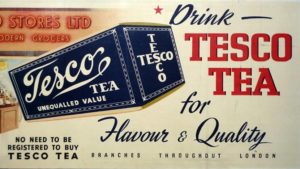MARKETING STRATEGY OF TESCO
Have you ever wondered why do companies/startups which set out with millions of dollars pumped in as seed and investor money, fail within 2-3 years of their existence?
And why do some startups which are cash-strapped from start, set out to become unicorn companies/startups in their industry?
The answer is simple: BUSINESS PLAN
Having a clear business plan from day one keeps you focused on the goals that are crucial for success and provides guidelines for day-to-day operations and decisions. A good business plan gives you goals to strive towards for the next month, year and beyond.
It surely pays to have a clear business plan, but having just a clear business plan is not enough, one needs to have a marketing plan that could aid the company’s business plan.
That’s what our point in case ” Tesco ” did. It was Tesco’s right blend of business and marketing strategy that led it to become the third largest retailer in the world in terms of gross revenues.
Tesco followed a step business strategy:
Accessibility >> Diversification
1. Accessibility :
Once started as a small store selling groceries to its customers, Tesco has grown to become a third-largest retailer in the world measured by gross revenues.
The first part of Tesco’s business plan was to make itself accessible to its target customers.
Owing to its big expansion goals, Tesco went out on a shopping spree, buying up its rival shops. In the 1950s the retailer bought 70 Williams stores and 200 Harrow stores, followed by 97 Charles Philips stores and the Victor Value chain in the early 1960s.
Tesco didn’t just stop at expanding its offline presence, the company also decided to sell products and reach out its customers through online channels.
As so today, the company has 6,000+ in over 11+ countries.
2. diversification:
Why settle down for just groceries, when you can provide your customers with a wide array of products that they need in their everyday life like books, clothing, electronics, furniture, toys, petrol, software, financial services, telecoms, and internet services, that’s exactly what Tesco did – They started retailing these products.
This diversification helped the company see its sales grow exponentially.
MARKETING STRATEGY OF TESCO
BRAND POSITIONING >> AWARENESS >> CUSTOMER ACQUISITION >> DIVERSIFICATION
1. Brand Positioning:
The first step in forming a Marketing strategy for Tesco was to position the brand. A positioning, clear enough so that it sets in the minds of the consumers.
With an aim to reach out to every walk of life, Tesco initially positioned itself as a high-volume low-cost retailer, but later in the 1990s, it repositioned itself as being the one that not only offers low-cost “Tesco Value” items but also premium range products under its “Tesco Finest” range.
With this positioning, Tesco tried to steer the middle ground, offering ‘value’ products alongside mainstream and its ‘finest’ range. They’ve made no secret of the fact they wanted their supermarket to sell everything which everyone wanted to buy at a price they were willing to pay.
But in the past few years, Tesco has faced a lot of issues related to their brand positioning with customers finding hard to relate to the brand. Customers weren’t sure what the Tesco brand meant to them – was it saving them money every day? Was is the cheapest, the best quality, the biggest range, the most pleasant buying experience?
Owing to these troubles, Tesco has decided to bring back “Value” in it’s positioning as it plans to take on its competitors.
2. AWARENESS:
The next phase in the marketing strategy of Tesco was to create and increase awareness of the brand.
The company relied heavily on offline promotion by pouring millions of dollars on billboards, print ads, TV commercials etc.
The aim of this activity was simple, get maximum exposure which can bring in a good amount of footfall in Tesco stores.
3. CUSTOMER ACQUISITION:
After creating awareness, it was time to acquire customers, and turn their loyalty towards the brand. To do so, Tesco had run Green Shield stamps a promotional tool which rewarded people for visits and spends but gained no customer information.
To counter this problem and to gather customer information about what do they buy, how much do they spend in a month, what products they buy the most etc., Tesco came up with loyalty cards – Tesco Clubcard
The key change since the days of Green Shield Stamps was the ability to track individual customer behavior cost-effectively using a magnetic stripe card.
There is an array of offers and benefits that Tesco Clubcard provides to the users. and has been a successful promotional tool for Tesco all these years.
Recently, Tesco has decided to come up with a digital Clubcard and make it easy for its customer to use.
4. DIVERSIFICATION:
Do the brands Chokablok, Halo, and Parioli ring any bells?
These are a few of Tesco’s venture brands which were launched by the supermarket to diversify and enter into the FMCG segment.
The aim of these Venture Brands was to create a house of brands that could take on premium offerings from companies such as Unilever and Procter & Gamble. The hope was that it would boost loyalty to Tesco by offering shopper products they couldn’t find anywhere else, giving people a reason to shop in its stores rather than at its rivals.
This concludes the Marketing strategy of Tesco


